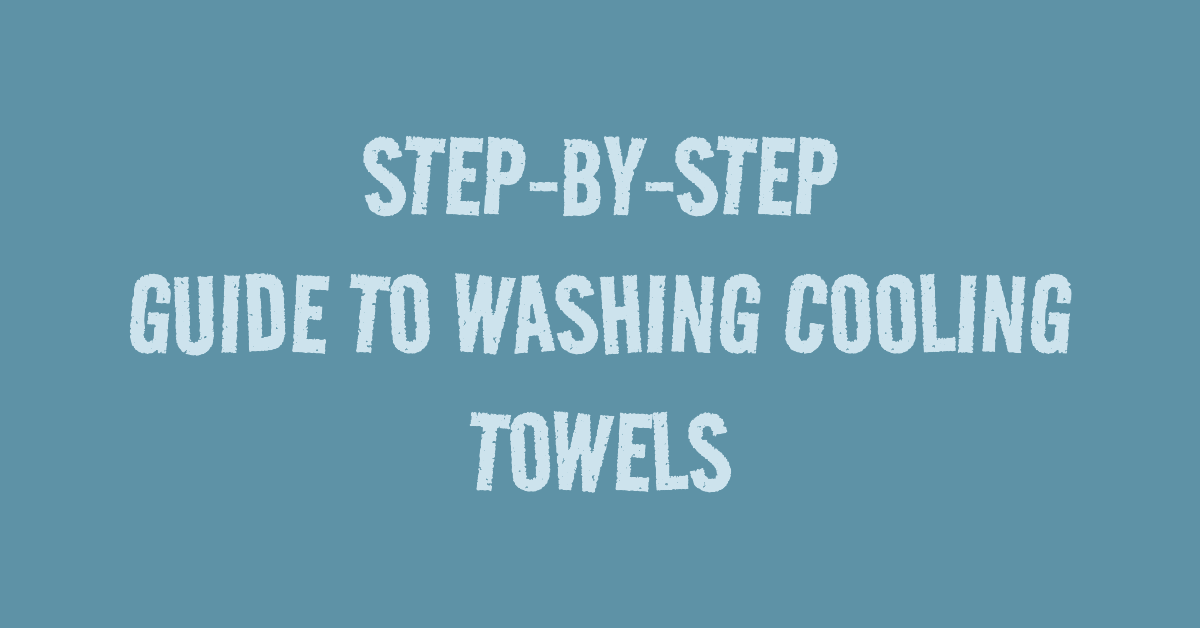During the hot summer months, cooling towels can provide relief from the heat. These towels are made to stay cool even in the hottest weather, making them a popular choice for outdoor activities.
However, like any towel, cooling towels can accumulate dirt, sweat, and bacteria over time. Properly washing them is essential to keep them clean, fresh, and functioning properly. This comprehensive guide will teach you everything you need to know about washing cooling towels.
Why Is It Important to Keep Towels Clean?
Just like regular towels, cooling towels can get dirty and smelly over time from sweat, skin oil, and bacteria. Washing them regularly is important for the following reasons:
- Eliminate odors: When we use towels, they get sweaty and smelly over time. Washing them with detergent makes them clean and fresh-smelling.
- Remove debris: Environmental debris like dust particles can be embedded in the fabric. Regular washing will get rid of these particles.
- Sanitize the fabric: Bacteria and germs transfer from your skin to the towels. Washing them kills germs and prevents the spread of bacteria.
- Extend lifespan: With repeated use, the cooling fabric can start to break down. Washing properly helps the cooling fabric last longer.
General Washing Guidelines
Hand Washing

Hand washing is a gentle and effective method for cleaning towels. Follow these steps for thorough hand washing:
- Before beginning the washing process, refer to the care instructions provided on the label. These guidelines may include specific recommendations for washing temperatures and detergents.
- Fill a bucket with cool water and add a small amount of mild laundry detergent. Avoid harsh detergents or bleach, as they can damage the fabric and reduce cooling efficiency.
- Submerge the towels in soapy water and gently agitate them to remove dirt and sweat. Pay special attention to areas that may be heavily soiled, such as the edges or corners.
- After washing, drain dirty water from the bucket and refill it with fresh cool water. Rinse the towels thoroughly to remove any remaining detergent residue.
- Gently squeeze out excess moisture from the towels. Then hang the towels or lay them flat on a clean surface to air dry completely.
Repeat the washing process as necessary for heavily soiled towels until the towels are clean.
Machine Washing

Follow these steps for machine washing:
- Select the Gentle Cycle: Choose the gentle or delicate wash cycle on your washing machine to minimize agitation and prevent damage to the towels.
- Use Cold Water: Wash the towels in cold water only, as warm or hot water can degrade the cooling fabric.
- Avoid Harsh Detergents: Avoid using fabric softeners which can damage the fabric fibers.
- Air Dry: After washing, remove the towels promptly from the washing machine and air dry them.
Drying Cooling Towels
It’s ideal to air-dry cooling towels to preserve the special fabric treatments completely. Avoid using a dryer, as it can cause shrinkage or damage to the fabric. If using a dryer is unavoidable, use the low heat setting. High heat can damage the synthetic fabric over time.
Addressing Specific Concerns
Mold and Mildew
To eliminate unpleasant odors from towels, follow these steps:
- In a bucket of cool water, add half a cup of baking soda and mix until dissolved.
- Submerge the towels in the baking soda solution and allow them to soak for at least 30 minutes.
- After soaking, rinse the towels thoroughly with clean water and wash them according to the general washing guidelines outlined above.
Stains
To effectively remove stains, follow these steps:
- Add 2-3 tablespoons of any good stain remover in a bucket of cool water and mix well.
- Put the stained towels in the solution and let them soak for 30 minutes.
- After soaking, rinse the towels thoroughly and wash them as usual using the recommended washing method.
Tips to Extend the Lifespan of Your Towel:
In addition to proper washing techniques, consider the following tips for maintaining the effectiveness of your cooling towels:
- Proper Storage: Store your cooling towels in a cool, dry place to prevent mold and mildew growth. Avoid storing them in sealed plastic bags or containers, which can trap moisture and promote bacterial growth.
- Avoid Harsh Chemicals: Avoid using harsh chemicals or fabric softeners when washing towels, as these can damage the fabric fibers and reduce cooling efficiency.
- Adjust Washing Temperature: While washing in cold water is generally recommended, if your towels are heavily soiled, you may need to wash them in hot water occasionally. However, avoid using hot water frequently, as it can degrade the fabric treatments.
- Washing Frequency: It depends on usage and personal preference. As a general rule, wash them after every few uses or when they become visibly soiled to maintain freshness and effectiveness.
Conclusion
Cooling towels only work their magic when properly maintained. By following these simple washing instructions, you can prevent your towel from losing its ability to keep you cool.
Implement these simple tips to erase odors, remove build-up, and extend your towel lifespan season after season. You’ll be comfortable no matter how hot it is!
Frequently Asked Questions
Can I put a cooling towel in the washing machine?
Most cooling towels are safe for machine washing, but it’s important to check the care instructions on the product label first. Some towels might require handwashing or have specific washing instructions.
Can I use regular detergent to wash my cooling towel?
Yes, you can use regular detergent to wash your cooling towel. However, it’s best to avoid harsh detergents, bleach, and fabric softeners. These can damage the material and affect the cooling performance of the towel.
How often should I wash my cooling towel?
It’s recommended to wash your cooling towel after every use. Washing it regularly helps maintain its effectiveness and keeps it free from odor-causing bacteria.

